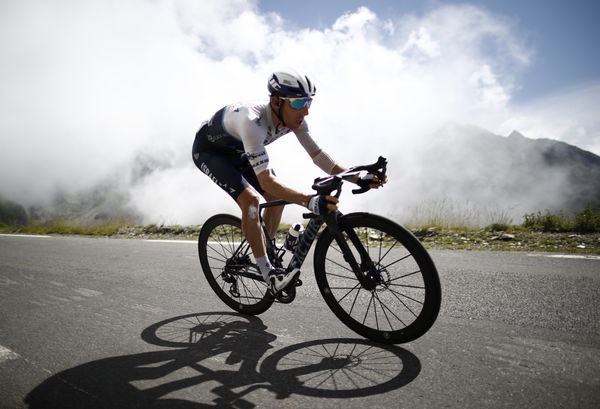
via Reuters
Cycling – Tour de France – Stage 18 – Pau to Luz Ardiden – France – July 15, 2021 Israel Start-Up Nation rider Michael Woods of Canada in action during Stage 18 REUTERS/Benoit Tessier

via Reuters
Cycling – Tour de France – Stage 18 – Pau to Luz Ardiden – France – July 15, 2021 Israel Start-Up Nation rider Michael Woods of Canada in action during Stage 18 REUTERS/Benoit Tessier
Cycling is one of the most common activities in the world; people cycle to commute, for exercise or simply for pleasure. However, professional cycling is a world apart from regular cycling. It’s one of the most intense sports in the world, with riders racing against time and each other. Accordingly, the bikes used in professional cycling differ greatly from regular ones.
While the structure might look the same, two big tires and a seat, it’s way more technical than that. For decades, cycling companies have been trying to find better technology and advancements to increase the speed and safety used in professional bicycles.
ADVERTISEMENT
Article continues below this ad
Racing bikes prioritize speed over comfort
The drop handlers in a racing bicycle are located lower than a normal cycle to aid a more aerodynamic posture while riding. The front and back wheels are placed closer to each other to ensure quick handling.
A racing bicycle’s most important characteristic is its weight and stiffness. This helps in determining the bicycle’s efficiency and the power at which the rider’s pedal strokes get transferred to the drive-train and then to the wheels. Hence, the possibility of increased speed.
Watch Story: Anthony Joshuas Expensive Car Collection: Rolls Royce, Mercedes, and More

via Getty
ETNA, ITALY – MAY 10: Arrival / Rohan Dennis of Australia and BMC Racing Team Pink Leader Jersey Disappointment / during the 101th Tour of Italy 2018, Stage 6 a 164km stage from Caltanissetta to Etna-Oss.Astrofisico 1736m / Giro d’Italia / on May 10, 2018 in Etna, Italy. (Photo by Tim de Waele/Getty Images)
Starting with the weight, the lighter the cycle, the better the quality. Racing bicycles are always light to help the riders have constant momentum. Quality bikes are made with special lightweight material such as carbon fibre.
The second difference would be in the components. The quality of chains, gears, shifters, cables, etc changes the game for riders. Better quality components are used in bicycles so that they run smoothly, are more reliable, and last longer.
Role of Aerodynamics in cycling
Aerodynamics play a crucial role in designing bicycles. The aim is to reduce the limiting effect of air as much as possible and ensure that a cyclist can cut through the resistance easily. The shape of the wheels and frames influences how easily the cycle can move against the air at extreme speeds. The wheels are thinner and wider, while the standard is fixed at 700C diameters.
The anatomy of a racing bicycle involves paddle, seat post, top tube, seat tube, down tube, fork, head tube, handlebar, brake levers, gear shifters, chain, collectively known as the group set. This group set plays an important role in determining the quality of the bicycle.
ADVERTISEMENT
Article continues below this ad
The rules for bicycle design are governed by the Union Cycliste Internationale (UCI). There are different bicycles for every racing event, which are also known as a road bike or ten-speed. For the velodrome (oval indoor tracks) the track bicycles are used. Whereas for off-road racing, mountain bicycles.
ADVERTISEMENT
Article continues below this ad
Designing and building professional cycles is an extremely meticulous process with great attention to detail. Thus, the effort and skill involved is reflected in the prices of these bikes as well.
Also read: Gummy Bears, Meatballs and More- What Food Do Professional Cyclists Eat?
ADVERTISEMENT
ADVERTISEMENT
ADVERTISEMENT
ADVERTISEMENT

